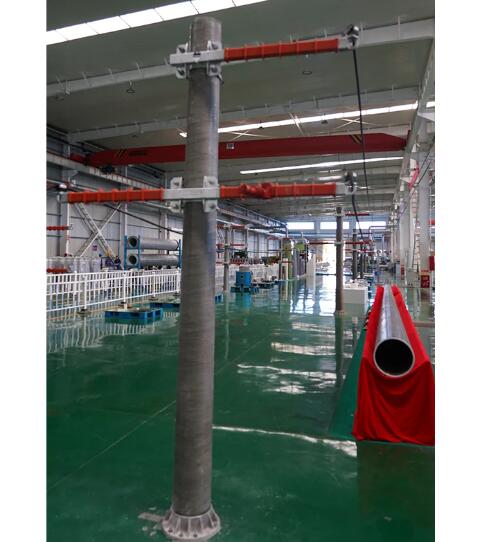Safety First: Using a 40 Ft One Piece Fiberglass Pole in High-Wind or Storm-Prone Areas
2024-06-21
A 40 Ft One Piece Fiberglass Pole is a valuable asset for various applications, from utility work to recreational use. However, its impressive height and material properties require careful handling, especially in high-wind or storm-prone areas. Ensuring safety while using these poles involves understanding the risks and implementing best practices. Here are the key safety considerations to keep in mind.
1. Securing the Pole Properly
Sturdy Base and Anchoring
Ensure that the pole is securely anchored to a sturdy base. This is particularly important in high-wind areas where the pole is subjected to strong gusts. Use heavy-duty anchors or guy wires to stabilize the pole and prevent it from tipping over. The base should be checked regularly for stability and reinforced as needed.
Regular Inspections
Perform regular inspections of the pole’s anchoring system to ensure it remains secure. Look for signs of wear, corrosion, or looseness in the anchors or guy wires. Regular maintenance can prevent unexpected failures during severe weather.
2. Weather Monitoring
Check Weather Forecasts
Before using the pole, always check the weather forecast. Avoid using or erecting the pole during high-wind warnings or storm advisories. If severe weather is expected, it is best to delay any activities involving the pole until conditions improve.
Use Wind Sensors
Consider installing wind sensors or anemometers near the pole to monitor wind speeds in real-time. These sensors can provide early warnings when wind speeds approach unsafe levels, allowing for timely action to secure or lower the pole.
3. Lowering the Pole in High Winds
Emergency Procedures
Develop and practice emergency procedures for lowering the pole quickly and safely in the event of high winds or storms. Ensure that all personnel are trained on these procedures and understand the importance of acting promptly to minimize risks.
Use of Mechanical Assistance
For large and heavy poles, mechanical assistance such as winches or cranes may be necessary to lower the pole safely. Ensure that such equipment is readily available and that operators are trained in its use.
4. Avoiding Electrical Hazards
Maintain Safe Distances
A 40 Ft pole can easily come into contact with overhead power lines if not properly managed. Always maintain a safe distance from power lines and ensure that the pole does not encroach on the minimum clearance distance specified by local regulations.
Non-Conductive Properties
While fiberglass poles are generally non-conductive, they can become conductive if contaminated with dirt, moisture, or chemicals. Keep the pole clean and dry to maintain its non-conductive properties and reduce the risk of electrical hazards.
5. Using Personal Protective Equipment (PPE)
Hard Hats and Safety Harnesses
Ensure that all personnel involved in handling the pole wear appropriate personal protective equipment, including hard hats and safety harnesses. This is especially important when working at heights or in windy conditions where the risk of falling debris or slips is higher.
Gloves and Protective Clothing
Wear gloves and protective clothing to prevent injuries from sharp edges or splinters that may occur during handling and maintenance of the pole.
6. Managing Environmental Factors
Inspect for Damage Post-Storm
After a storm or high-wind event, inspect the pole for any damage before using it again. Look for cracks, bends, or any other signs of structural compromise. Address any damage promptly to ensure the pole remains safe to use.
Protect from Lightning
In storm-prone areas, consider installing lightning protection systems to safeguard the pole and surrounding structures. While fiberglass is non-conductive, lightning can still cause physical damage to the pole and pose a risk to nearby personnel.
Conclusion
Using a 40 Ft One Piece Fiberglass Pole in high-wind or storm-prone areas requires careful planning and adherence to safety protocols. By securing the pole properly, monitoring weather conditions, developing emergency procedures, and using appropriate PPE, you can mitigate the risks associated with adverse weather. Regular maintenance and inspections further ensure that the pole remains in optimal condition, ready to perform safely and effectively. Prioritizing these safety considerations helps protect both the equipment and the people who rely on it, ensuring that the pole can be used confidently across various applications.



